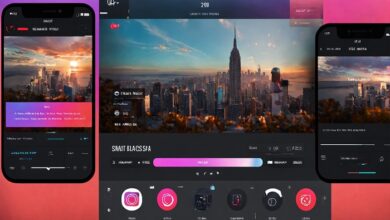
Smartphones have come a long way since their inception, with manufacturers constantly pushing the boundaries to provide better performance, longer battery life, and improved displays. One feature that has been making waves in the smartphone world is the 144Hz display. In this article, we will explore what a 144Hz display is, how it works, and why it matters to smartphone insiders.
What is a 144Hz Display?
Before diving into the importance of a 144Hz display, it’s essential to understand what it is. A 144Hz display is a type of display that refreshes the screen 144 times per second. This means that the screen is updated every 6.94 milliseconds, providing a seamless and smooth user experience. In comparison, a traditional 60Hz display refreshes the screen 60 times per second, meaning that the screen is updated every 16.67 milliseconds.
How Does a 144Hz Display Work?
To understand how a 144Hz display works, we need to look at the display’s refresh rate. The refresh rate of a display is the number of times the screen is updated per second. The higher the refresh rate, the smoother the user experience. A 144Hz display achieves its high refresh rate by using advanced technology that allows the screen to refresh 144 times per second.
Why is a 144Hz Display Important?
Now that we understand what a 144Hz display is and how it works, let’s explore why it matters to smartphone insiders.
1. Improved Gaming Experience
One of the primary reasons why a 144Hz display is important is that it provides an improved gaming experience. With a higher refresh rate, gamers can experience smoother and more fluid gameplay, making it easier to track fast-moving objects and react quickly to changes in the game. This can make a significant difference in competitive gaming, where every millisecond counts.
2. Better Motion Clarity
Another advantage of a 144Hz display is that it provides better motion clarity. With a higher refresh rate, there is less motion blur, meaning that fast-moving objects appear sharper and more defined. This can make a significant difference in action-packed movies or TV shows, where the viewer needs to keep up with the fast-paced action.
3. More Immersive Viewing Experience
A 144Hz display can also provide a more immersive viewing experience. With a higher refresh rate, the screen updates more frequently, making the viewer feel like they are part of the action. This can make a significant difference in gaming, movies, or virtual reality experiences, where the goal is to provide an immersive experience.
4. Enhanced Productivity
Finally, a 144Hz display can also enhance productivity. With a smoother and more responsive screen, users can work more efficiently, reducing eye strain and fatigue. This can be particularly important for professionals who spend long hours in front of a screen.
Conclusion
In conclusion, a 144Hz display is an essential feature for smartphone insiders. With its improved gaming experience, better motion clarity, more immersive viewing experience, and enhanced productivity, it’s no wonder that this technology is gaining popularity. As smartphone manufacturers continue to push the boundaries of what is possible, we can expect to see more and more smartphones with 144Hz displays in the future.
FAQs
- Do all smartphones have 144Hz displays?
No, not all smartphones have 144Hz displays. However, more and more manufacturers are starting to include this feature in their devices. - Does a 144Hz display drain more battery?
Yes, a 144Hz display does require more power than a traditional 60Hz display. However, many smartphones with 144Hz displays come with advanced battery optimization.
- Is a 144Hz display worth it for non-gamers?
While a 144Hz display provides significant benefits for gamers, it can also enhance the viewing experience for non-gamers. The increased motion clarity and smoother user experience can make a difference when watching movies or TV shows. - Can I change the refresh rate on my smartphone?
In some cases, yes. Some smartphone manufacturers allow users to adjust the refresh rate of their device, allowing them to switch between 60Hz and 144Hz depending on their needs. - How much does a 144Hz display affect battery life?
The impact on battery life varies depending on the device and how it is used. However, most devices with 144Hz displays come with advanced battery optimization features to help mitigate the impact on battery life.



